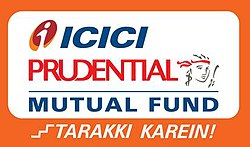Banking & PSU Debt Fund

1Y
3Y
5Y
SI
Nav
Risk

1Y
3Y
5Y
SI
Nav
Risk

1Y
3Y
5Y
SI
Nav
Risk

1Y
3Y
5Y
SI
Nav
Risk

1Y
3Y
5Y
SI
Nav
Risk

1Y
3Y
5Y
SI
Nav
Risk

1Y
3Y
5Y
SI
Nav
Risk

1Y
3Y
5Y
SI
Nav
Risk

1Y
3Y
5Y
SI
Nav
Risk

1Y
3Y
5Y
SI
Nav
Risk
Banking & PSU Debt Fund is a type of mutual fund that primarily invests in debt securities issued by banks, Public Sector Undertakings (PSUs), and public financial institutions. SEBI mandates that these funds invest a minimum of 80% of their net assets in such papers.
These issuers typically have top credit profiles and are regulated, making these funds considered safe investments.
Such mutual funds are designed to provide capital safety along with steady returns, leveraging the reputation of government-supported and well-known businesses. Fund managers usually invest in securities with short to medium durations, which helps reduce risk from interest rate changes and ensures liquidity.
Who Should Consider This Fund
Banking and PSU Debt Funds are suited for conservative investors who prioritize safety, good liquidity, and decent returns. These funds typically appeal to individuals planning to invest for 2 to 4 years and who have a low to moderate risk tolerance.
They are ideal for investors seeking returns higher than fixed deposits or savings instruments with low interest rates. These funds also suit those who want exposure to high-quality debt while avoiding lower-rated corporate bonds or long-duration securities.
Risks and Return Potential
These funds are highly regarded as safe from the credit perspective because they invest in debt instruments issued by entities with the highest ratings, such as nationalized banks, RBI-regulated institutions, and government-backed PSUs. However, they still carry interest rate risk, although this risk is typically much lower compared to long-duration or dynamic bond funds.
Banking and PSU Debt Funds typically provide annualized returns between 6% and 7.5%, depending on interest rate conditions and the fund manager's strategy, based on past performance. They are considered low-volatility funds, making them suitable for risk-averse investors.
Taxation rules for these funds align with those applicable to other debt funds. Gains from short-term holdings (less than three years) are taxed according to the investor’s income tax slab. For assets held longer than three years, long-term capital gains (LTCG) provisions apply, offering indexation benefits that reduce the tax burden on gross gains.
Benefits of Banking & PSU Debt Funds
The most significant advantage of Banking & PSU Debt Funds is their exclusive focus on high-quality issuers, which drastically reduces the probability of credit default. By allocating capital to entities with government backing or regulatory compliance, these funds offer strong capital preservation.
They provide higher returns compared to conventional bank fixed deposits and are quite liquid. Investors can redeem their investments, either partially or fully, without long lock-in periods.
These funds are professionally managed, with fund managers actively monitoring and adjusting portfolios to respond to interest rate changes and control risk.
Banking & PSU Debt Funds can be a strategic component of a low-risk investment portfolio, making them ideal for creating a cushion or emergency fund, or simply as a place to store short-term surplus cash.
Things to Keep in Mind Before Investing
Banking & PSU Funds are considered relatively safe, but they still carry some risks. Interest rate fluctuations may impact NAVs, especially if the portfolio contains medium-term securities. It is important to review the average maturity, yield to maturity (YTM), and credit profile before making an investment decision.
Investors should carefully choose between the Growth and IDCW (Income Distribution cum Capital Withdrawal) options based on their financial goals. While IDCW allows for regular payouts, these are not guaranteed and can vary depending on the fund’s performance.
These funds are ideal for cautious and risk-averse individuals who seek returns slightly higher than liquid funds without compromising on safety.
Get In Touch
Interested in exploring more about JezzMoney Mutual Fund Distributors Software? Submit the form, and we will respond quickly.
Get Expert Advice on Investment in Mutual Funds!
- Certified mutual fund distributors around India will reach out to help you build your future.
- Connect with trusted mutual fund distributors and find them from your city and pincode area.
- JezzMoney is only the mediator to help you connect with these certified professionals.
- It is your obligation to gather accurate information when you receive contact from our platform.